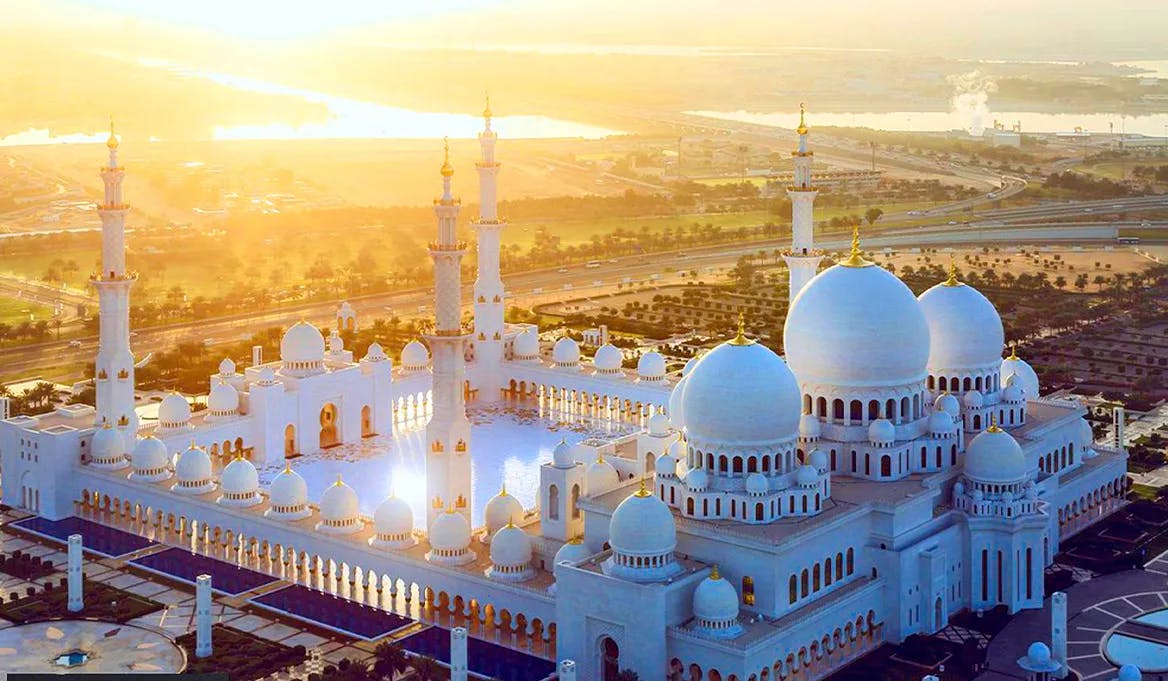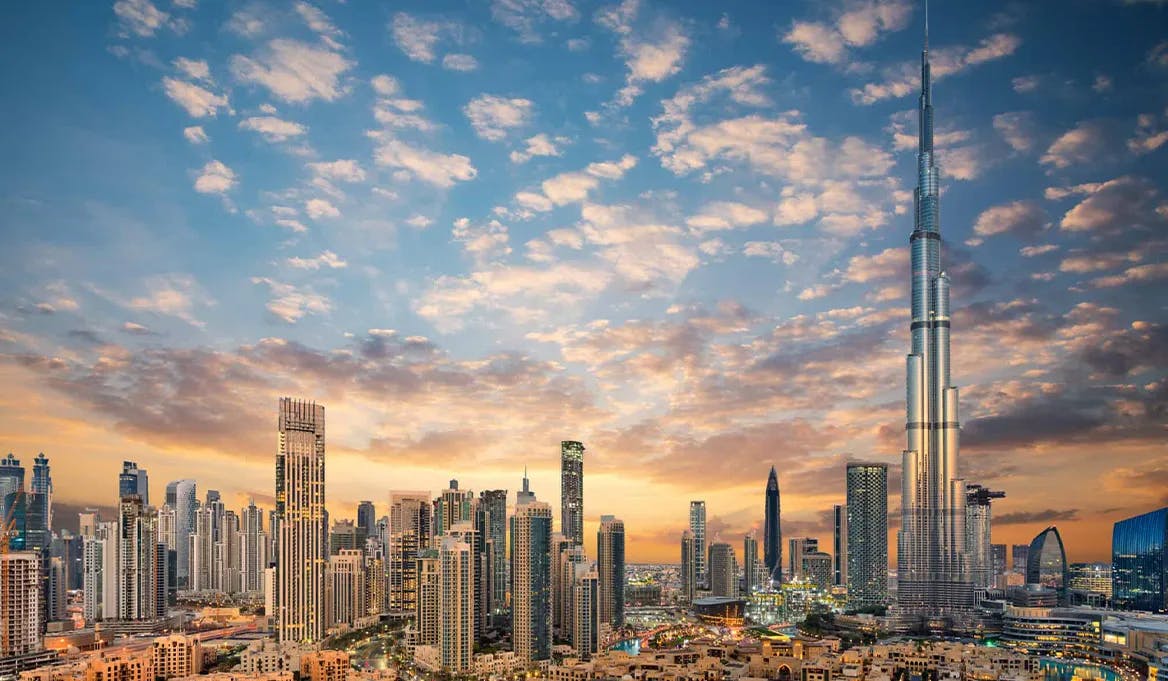
From Ancient Roots to Modern Wonders: The Evolution of UAE Architecture and Design
Aug 12, 2024
7 minutes read
The United Arab Emirates (UAE) has dramatically altered from a modest assemblage of desert settlements to the forefront of architectural innovation. The progression of UAE architecture and design has been directly linked to its rich cultural heritage, fast modernization, and futuristic worldview. Abu Dhabi architecture exemplifies this transformation, blending traditional Islamic influences with cutting-edge designs that redefine urban landscapes. This article investigates the path of architectural masterpieces in the UAE, from the very first to modern ones, demonstrating the way the area kept its identity intact but also at the same time integrated futuristic designs.

Historical Context: The Foundations of UAE Architecture
Traditional Architecture: The Early Days
The architectural history of the UAE comes from the Bedouin culture, which influenced the architecture in UAE with traditional houses made of palm fronds (Arish) and mud-brick (Barasti). These structures were simple to construct yet highly efficient, designed to withstand the harsh desert climate.
The Influence of Islamic Architecture
The key principle for UAE's architectural style has been Islamic design, characterized by geometrical motifs with the addition of domes and arches. Mosques, souks, and forts are relics that belong to the Islamic period, serving as a testament to the rich heritage of the UAE. Over time, modern architecture Dubai has seamlessly blended these traditional elements with innovative designs, creating a skyline that reflects both cultural legacy and futuristic vision.
The Pearl Trade Era
During the late 19th and early 20th centuries, the pearl trade brought wealth to the region. With this economic bubble, many rich men got the chance to erect their houses and buildings, showcasing the elegance of Emirati architecture. These structures became more elaborate, often incorporating wind towers (Barjeels), a distinctive feature that naturally cools the interiors while reflecting the region's architectural ingenuity.
The Dawn of Modern Architecture: Post-Oil Boom
The Oil Boom and Urbanization
The UAE got into a new age in the 60s by unearthing and selling oil products, initiating the oil boom. The upsurge of budget caused quick urbanization, which changed barely known places into lively cities. However, even as modern structures rose, efforts to describe traditional desert architecture, focusing on eco-friendly features and their functions in the UAE became essential in preserving heritage. Techniques such as wind towers (Barjeel) for natural cooling, thick mud-brick walls for insulation, and courtyards for ventilation highlight how past designs prioritized sustainability in an extreme climate.
The Rise of Dubai and Abu Dhabi
The monumental ascent of both Dubai and Abu Dhabi to the world architectural prevailing stage was noticed. Skyscrapers have taken over the city, which is a perfect combination of the traditional Islamic art and modernity. Amid this rapid transformation, UAE traditional houses continue to hold cultural significance, reflecting the region's rich heritage through their wind towers, courtyards, and intricate designs.
The Impact of Globalization
Globalization encouraged international architects to come to the UAE, leading to an architecture in which different styles collided. It was the time when projects like the building of the Burj Al Arab, which indicated Dubai's ambition of luxury, were executed. Despite these modern influences, the traditional architecture of UAE remained a key inspiration, with elements like wind towers, courtyards, and intricate geometric designs blending seamlessly into contemporary structures.
Key Principles of Modern UAE Architecture
Sustainability and Environmental Considerations
Architecture in the modern UAE gives a very high mark to sustainability, by creating buildings that consume less energy. The buildings like Masdar City of Abu Dhabi are the best illustrations of the country's commitment to environmentally friendly design. Also, the architecture of new apartments or villas being constructed are worth witnessing.
Innovation and Futurism
The UAE names architectural innovation and are often seen as long-distance runners of challenges. UAE architecture is a testament to visionary design, blending modern engineering with cultural heritage. The Burj Khalifa, the tallest building in the world, is one of the best examples of the logic of their forward-looking approach.
Cultural Preservation Amidst Modernization
Despite the fact that the UAE has greatly undergone a lot of modernization, culture has accrued more than ever. Contemporary designs usually integrate the customary traits, serving as a guaranteed proof that the country is not only modern but also historic.
Methodologies and Tools: The Craft Behind the Creations
Use of Advanced Technologies
Modern methods such as Building Information Modeling (BIM) and 3D printing have had a significant impact in the construction sector, particularly in the UAE, and have allowed a more intricate and accurate design. Even technologies being used in Dubai waterfront properties are to die for.
Collaborative Design Approaches
Architects and engineers in the UAE prefer the traditional method of cohesive collaboration, ensuring the aesthetic and structural aspects of the project are well thought out. This multidisciplinary approach has resulted in some of the most distinctive structures in the world.
Innovations in Construction Techniques
The UAE, in particular, has taken innovative measures in the construction process, for example, by introducing new construction methods for such structures as skyscrapers. By means of the high-strength concrete and the breakthrough in cooling systems, we are seeing this technology implemented all over the world, particularly in the ambitious projects led.
Challenges and Solutions in UAE Architecture
Navigating Harsh Climatic Conditions
The UAE desert environment is notoriously harsh on architects. Smart solutions such as wind towers, clear glass, and sun blocking technologies can be made to combat the heat waves in the regions with, or of, intensive solar radiation.
Balancing Tradition with Modernity
The issue present in the UAE of preserving traditional building design and still creating modern ones is continuous. Nevertheless, the country has successfully infused its cultural heritage into modern establishments.

Managing Rapid Urbanization
Urbanization in the UAE has occurred at a very fast pace and so, it has indeed constantly put a burden on urban planning, the main question being how such rapid growth can be made sustainable. Both Dubai and Abu Dhabi are making good progress in planning urban spaces that are responsive to such challenges focusing on sustainability over a longer duration.
Future Trends: What Lies Ahead?
Smart Cities and Technological Integration
Dubai's Smart City initiative is among the UAE's most outstanding intelligent city projects. These are cities that are designed to be super interconnected, and a variety of other integrated systems are connected by IT, which leads to outstanding living conditions for the citizens of these cities.
Continued Focus on Sustainability
Sustainability will continue to play a major role in UAE architecture. The prospective creation of the greenest buildings is expected, and the Emirates will stand out as the most sustainable place in the whole world.
Cultural Revival in Modern Designs
It is an ongoing trend in the field, which is to bring back the old ideas of building the cities, which were original and still represent the city. It has been predicted that this cultural movement will be the backbone to UAE architecture and will make sure that the country's heritage is well maintained while at the same time still creating innovative structures.
Case Studies: Iconic Structures in the UAE
The Burj Khalifa: A Pinnacle of Innovation
The Burj Khalifa, which is 828 meters tall, is not just the world's tallest structure but also a testimony to the ambition and innovativeness of Dubai. The novel hideous, that is more Islamic than anything else, is the Burj Khalifa skyscraper which is erected in the downtown of Dubai near the Arabian Gulf sea where it takes schematic shapes thanks to its Y-shaped floor design.
The Sheikh Zayed Grand Mosque: A Blend of Cultures
The Grand Mosque in Abu Dhabi, which is the residence of the Sheikh Zayed, exhibits the best hybrid architecture. It is an emblematic place which unites the best from both; the initial, and the new age. The mosque, with its striking white marble façade and complex interior designs, is one of the most sought-after tourist destinations in the UAE.
The Louvre Abu Dhabi: A Cultural Icon
The Louvre Abu Dhabi is the UAE's way of proving its dedication to the preservation of its own culture and global collaboration. Jean Nouvel, who created it, desired to incorporate a huge dome that deflects the sunlight in such a way that it mimics the traditional Arabian mashrabiya.
Expert Opinions: Insights from Architectural Leaders
The Role of Architecture in UAE's Global Image
According to the architectural experts, the UAE's commitment to innovation and design has been the main factor in creating the global image of the country. The country's unique style of combining old and new technologies has made it the world's first in the field of architecture.
Sustainability as a Driving Force
Moreover, sustainability is another aspect of UAE architecture that experts underscore. UAE, as the world is drifting into greener practices, is a forerunner by incorporating sustainable design into its urban planning.
Conclusion: The Future of UAE Architecture
The UAE architecture has witnessed an eventful journey filled with revolutions, innovations, and the externalization of the past. The country has treaded well between its historical landscapes and modern masterpieces, managing to cope with fast technological developments while still preserving its cultural heritage. As it looks towards the future, the UAE's architectural layout will also mirror its dreams, ethics, and the self.



